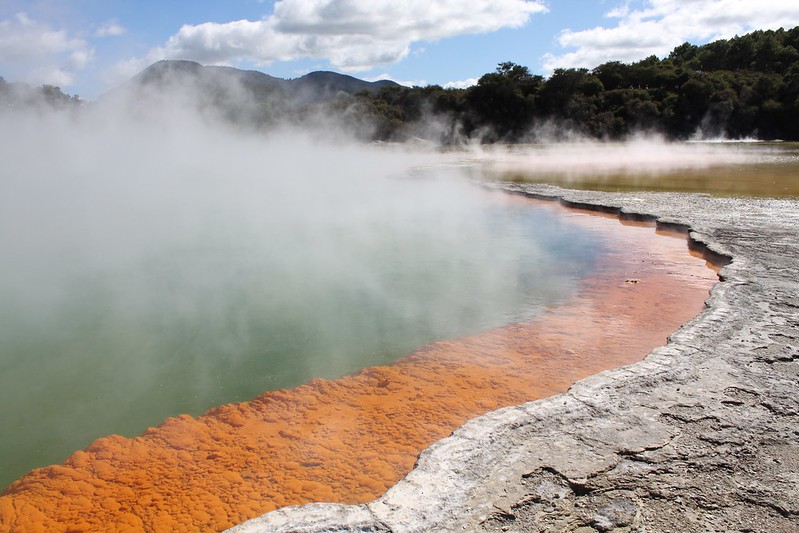The Toi Moana Bay of Plenty Regional Council has approved the Rotorua Geothermal System Management Plan (SMP) Nga Wai Ariki o Rotorua He Mahere Whakahaere Punaha. A product of extensive research and monitoring by GNS Science, the new “care plan” aims to provide an integrated approach the sustainable management of the Rotorua Geothermal System in New Zealand with due consideration of protecting and preserving its vulnerable and unique surface geothermal features.
The full Rotorua Geothermal System Management Plan (SMP) document can be accessed via this link.
GNS Science had also recently co-authored a study on the opportunities for geothermal process heating in the Bay of Plenty region.

Undoing the system’s decline
Though undeniably a powerful geothermal system, the Rotorua Geothermal System has showed signs of deterioration since the 1970s because of uncontrolled extraction of geothermal fluids. This was evident in springs that have stopped flowing or dried out, as well as geysers like Waikite and Papakura ceasing to erupt. This apparent fragility of the system has been widely documented through the years by the matauranga Maori, scientific, and historical communities.
The decline of the system prompted for a protection and recovery plan in the 1980s. Over the past 40 years, this plan has helped in the recovery and stabilization of the system. However, there are some features that have not, and may not, fully recover.
A more comprehensive management plan
The geothermal systems of New Zealand are currently managed under the Resource Management Act of 1991. This act also appoints the Bay of Plenty Regional Council with the responsibility of regulating the extraction and discharge of geothermal fluids, as well as the protection of significant surface geothermal features.
The new “care plan” seeks to cover the gaps in the management of the Rotorua geothermal system. Using decades of research, monitoring, and climate data from the regions, the team from GNS Science created a management plan based on a deeper understanding of the shallow and vulnerable portions of the Rotorua system.
“The links between aquifer water levels, springs, pools, geysers, lake levels, groundwater and rainfall are now much better recognised – which can be now used to better monitor vital signs of the Rotorua system,” said Brad Scott, Volcano Information Specialist at GNS Science.
“Now Bay of Plenty Regional Council has a model they can use to test and predict the potential effects of geothermal use and development, and that geothermal allocation is sustainable,” added Robert Reeves, Geophysicist at GNS Science.
Moving forward
The Rotorua Geothermal System Management Plan will be used to guide and inform changes to the Regional Natural Resources Plan (RNRP) and the Rotorua Geothermal Regional Plan (RGRP) later this year. These plan changes are part of a regular review process under the Resource Management Act (RMA) to make clear how the geothermal (ngawha) resources of the Rotorua Geothermal System are to be used.
Beyond Rotorua, the methodology developed during the research will also aid in identifying and characterizing surface geothermal features based on their significance. This knowledge will facilitate in providing evidence on the values placed on the surface geothermal features.
Source: GNS Science
The post New geothermal resource management plan established for Rotorua, New Zealand first appeared on ThinkGeoEnergy – Geothermal Energy News.
